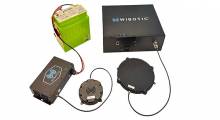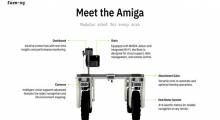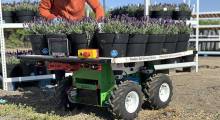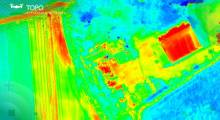With drones that can spray pesticides, spread fertilizer, and sow seeds, XAG said farmers throughout Vietnam are using its technology.
One farmer using XAG’s drone is Le Thanh Nguyen, a 62-year-old man who was born and raised in Tam Nong District of Dong Thap Province. Guanghzou, China-based XAG recently spotlighted Nguyen, noting he was one of the earliest farmers to adopt agricultural drones in rice production.
Drones put a new spin on agriculture in Vietnam
Vietnam is the world's second largest rice exporter, with 6.5 million tons exported in 2021, according to Statista.com
Its rice production is primarily supported by small-scale farmers with over 65% of households cultivating under 5 hectares, reports the Food and Fertilizer Technology Center for the Asian and Pacific Region.
However, as urbanization and the rising price of fertilizers keep up pressure, Vietnamese farmers have had to cope with the lack of labor force and higher cost of production, with some of them choosing to cut the scale of rice farming.
Nguyen was no exception.
Whenever the busy rice season came, he would often become frustrated with the shortage of agricultural labor, and the poor work ethic of those he could find. Workers were supposed to come in the early morning to sow seeds for his rice field, but very often they arrived late in the afternoon.
By that time, the seeds had germinated and the shoots were easily broken during spreading and therefore caused yield loss. And even when the workers would come on time, Nguyen said he was still not satisfied with the result of seeding by hand or spreader.
In 2021, after XAG's local partner DigiDrone introduced Nguyen to its agricultural drone, he decided to try one out.
Nguyen has used the XAG drone for crop spraying, fertilization, and direct seeding, which precisely distributes on crops and leads to higher rice yield.
“The drone eases the burden and greatly improves the efficiency. In the past, I had to pay four workers to carry and spread 1 ton of fertilizers on my field from 6 a.m. to 2 p.m., and they were exhausted,” he said.
“Also, the drone has benefits of large-volume, uniform distribution, and high spray penetration, which can help me with better pest control and nutrition management,” he added. “When feeding nutrients to the rice seeds sown, 100% absorption is achieved by drone spraying whereas only 6 or 7 seeds out of 10 can take in the nutrition if spraying manually.”
Reduce the costs of rice farming
Another big reason Nguyen decided to start using drones was because of their cost savings.
Costs have risen in agricultural production because of a shortage of skilled workers. Vietnam agriculture employment numbers went from around 49% in 2010 to 36% in 2020. The cost of hiring workers has also gone up 40% when compared to three years ago, XAG claimed.
Nguyen said the drones are better at spreading seeds than humans are.
“For 1 hectare of rice field, it only needs 120kg seeds to sow by drone but 150-200kg should be spread manually for the same estimated output,” Nguyen said. “Spreading by hands or traditional sowing machine is likely to result in crop damage and waste of seeds, leading to a yield loss as well as profits. By using the XAG agricultural drone for aerial seeding, such a situation is improved dramatically.”
A versatile drone to boost efficiency
At the Mekong River Delta, rice is planted and harvested three times a year. Traditionally, rice farmers rely on pesticides at different stages to ensure the rice is protected from pests and diseases, while fertilizer and nutrient solutions in high amount are required to boost crop growth.
Weather conditions could also affect the autumn-winter rice season, when most of the manual operations had to be delayed because of rain and wind. Now with the latest XAG P100 agricultural drone, fertilizing one ton only takes an hour to finish with even spreading results.
Article topics
Email Sign Up
















